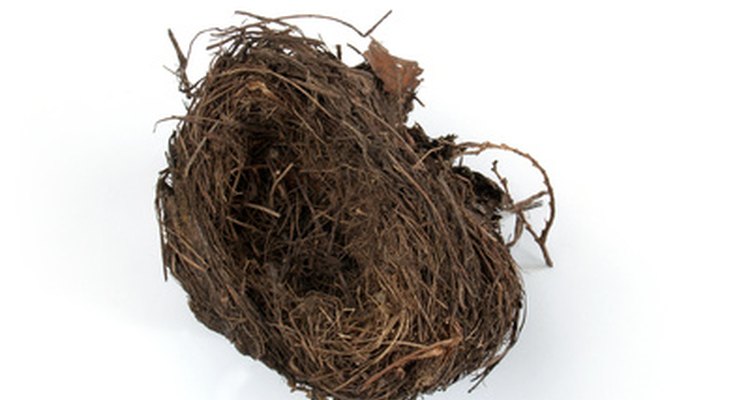
Swallow’s nest soup, or bird’s nest soup, is a Chinese delicacy that people have eaten for over 1,000 years. The Chinese call the soup yàn w?, meaning \"swiftlet nest.\" Serving as a sweet or savory meal, the soup’s contents are as literal as its name. Consisting of edible bird’s nests, swallow’s nest soup is one of the most expensive foods in the world and has even been labeled the \"caviar of the East.\"
Types
The white nest, black nest and red blood nest are most commonly used in swallow’s nest soup. A sweet swallow’s nest soup will usually include the nest, water and rock sugar; whereas the ingredients of a savory swallow’s nest soup include chicken broth mixed with pieces of nest, chicken breast, quail eggs, mushrooms and occasionally ham.
These nests are also used in cosmetics and traditional Chinese medicines.
Cost
Swiftlets’ nests are in extraordinarily high demand, with Hong Kong being the largest importer. Prices vary depending on the type and amount of bird’s nest. Black nests are the least expensive, but they must be cleaned to get rid of feathers. White and red blood nests are considerably more expensive.
While only one bowl of swallow's nest soup goes for between $30 to $100, 1 kg can cost $2,000. The more rare red blood nests can fetch up to $10,000 per kg (at 2010 prices). High prices result from the product’s popularity, along with the difficulty of obtaining nests.
Harvesting
During breeding season, male swiftlets build the shallow-cup-shaped nests from interwoven strands of saliva over a 35-day period. The nests are harvested between February and May in nesting farms that consist of doorless, multi-story \"condos.\" The houses are a safer harvesting alternative to the former limestone caves of South East Asia where collectors climbed great heights to retrieve the nests.
Law limits swallow's nest harvesting in many regions. However, corruption and violence cloud the industry due to the nests’ value and harvesters taking too many nests, including those with baby birds. Although the swiftlet species is not threatened globally, in certain regions, the swallow’s population is declining.
Health Benefits
Swallow’s nest soup was traditionally believed to provide various health benefits, such as aiding in digestion, improving the voice and strengthening the immune system, according to Dr. Christine Gerbstadt with the American Dietetic Association. The soup contains calcium, iron, potassium and magnesium.
Negative Health Aspects
Adverse health effects can occur when eating swallow’s nest soup. A few Singaporeans died in 2007 after experiencing severe allergic reactions to swallow’s nest soup, reported the Malaysian Society of Allergy and Immunology.
The soup is actually of little nutritional value, according to Biochemist King Yun-Cheng at the Chinese University of Hong Kong. Yun-Cheng found there is a water-soluble glycol-protein in the nest, promoting cell division within the immune system. This is, however, destroyed during the cleaning process. .
Related Articles
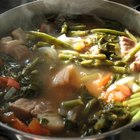
How to Make Sinigang

The Nutrition of 15-Bean Soup
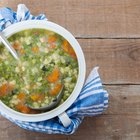
Vegetable Soup for a Cancer Diet

How to Make Sacred Heart Diet Soup
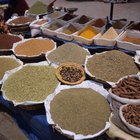
Nigerian Herbs & Spices

Description & Characteristics of ...

Nutritional Information for Johnny's ...
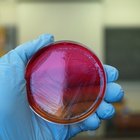
Uses of Saltpeter in Food

How to Make Chicken Vegetable Soup

Asian Secret to Removing Cellulite

Hop Allergies

Nutrition of Hunan Chicken

How Many Calories in Velveeta Mac & ...

What Countries Harvest Pearls?

How to Cook Moghrabieh

Food Sources of Phosphatidylcholine

A List of Foods That Contain Choline
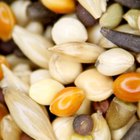
Does Bird Seed go Bad?

Symptoms of Food Poisoning With Oysters
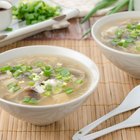
Calories in Egg Flower Soup
References
Writer Bio
With more than 10 years of professional writing experience, Diana Bradley gained a journalism degree from Southern Connecticut State University where she was news editor for "Southern News" and president of SCSU’s chapter for SPJ. Since then, Bradley's moved to the UK and written for various local, national and international publications.
Photo Credits
nest image by Pefkos from Fotolia.com